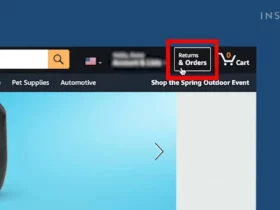Establishing your ecommerce business on the Amazon Marketplace is no small feat, but there are steps you can take to position yourself at the top of your market using search engine optimization and smart digital marketing.
A crucial component in meeting your sales goals and driving customers to your product listings is partnering with talented Amazon marketing managers like the team at Grow Amazon.
To get the most out of your Amazon presence, though, the biggest favor you can do for yourself and your business as an Amazon seller is to learn the ins and outs of Amazon’s search function, SEO tools, keyword research as well as different Amazon functionalities, like Amazon wish lists.
Get Acquainted With Amazon Searches
You’ve probably used Amazon’s search engine yourself while shopping online—along with the nearly 200 million others who visit Amazon.com every month.
But do you know how you arrive at those search results and what goes into getting you there?
- Be a customer. A great way to familiarize yourself with Amazon’s search engine is pretty simple: use it! Make a list of 10 keyword strings or phrases that you think customers in your target audience would use to search for a product like yours, and see what auto-populates in the search engine as you begin typing them. This gives you valuable insight about what people are actually searching for and what results they get when they use certain search queries.
- Be a spy. Observe the listings and product descriptions of your competitors or other Amazon sellers in your niche. What search queries delivered search results that included their product pages? What keywords and phrases are featured prominently in their titles and descriptions?
- Be a machine. Take the list of keywords and phrases you made earlier, and multiply it by 10. It might seem impossible to come up with 100 possible search terms or phrases to describe your product, but once you get rolling, you’ll find that flexing your brain this way is an excellent form of keyword research. You’re only one person, but if you had access to 100 other people’s brains, what search terms might you find there? Once you’ve tested those search queries, you should be on your way to understanding which relevant keywords are most appropriate for your audience.
Laser-Focus Your Keywords
Amazon’s most recent algorithm is called A10, and it’s what drives Amazon’s search results, ultimately funneling buyers to product listings.
It’s an update from the old A9, and the way A10 operates puts more power—and more responsibility—into the hands of sellers when it comes to ranking factors.
The first way Amazon decides what products to show customers first is assessing sales velocity (how fast your products sell on Amazon).
Essentially, this means that the more you sell, the more your products will show up in Amazon searches.
While you can’t immediately change your sales velocity, you can have an immediate effect on the other major driver of the algorithm: keywords.
- Use keywords and phrases with high search volume. Remember the lists you made earlier? You’ll use those to populate your backend keyword fields. Which keywords and search queries returned products most similar to yours? Which returned top-ranked products from successful Amazon sellers? Those keywords have high search volume.
- Use keywords and phrases that funnel searches to your specific product. The key to getting your product listings in front of your target audience is making sure you’re giving potential buyers exactly what they’re looking for. If your product fulfills a specific need that’s narrower than the general product category it belongs to, your product listings must make that clear. What sets your product apart? What keywords relate specifically to what you offer as an Amazon seller?
- Use reader-friendly, accessible language. It’s essential to find a balance where you use relevant keywords and information without overwhelming customers reading your titles and descriptions. Every customer-facing element in your title and product listing should feel natural, without awkward or forced language. Use your keywords strategically; avoid the temptation to overstuff your titles and product descriptions with keywords and phrases that don’t add value to your product listings.
Deliver on Your SEO Promises
Once you’ve driven customers to your product listing, your goal is to convert their initial interest into a sale.
The way to do that is by offering high-quality product images, a concise and attractive product description, and an overall product page that inspires confidence in Amazon customers.
- Showcase your product with pride. Use professional equipment for your product images, and show your product from multiple angles. Consider what makes your product excellent, and be sure to emphasize those elements in your images. When possible, use video to show Amazon customers what the product looks like more thoroughly than images can. If you don’t have access to professional photo and video equipment, consider outsourcing your photography and videography, or use an online video editor to present them with the best quality possible.
- Give shoppers all the information they need and want. When you’re anxious to get your product listings in front of potential buyers, it can be tempting to take a minimalistic approach to your product descriptions. And restraint is good—you don’t want to annoy shoppers with a wall of text. However, you do need to be sure that anyone who has arrived on your product page via Amazon search results is presented with all the information they need to make a purchase then and there. Depending on your product, you’ll need to make sure to include information such as: color, texture, materials, size, weight, capacity, and any other relevant measurements or descriptions.
- Prove yourself. Reviews are a powerful way to show potential buyers that other Amazon customers love your products. Reviews via Amazon, especially with the Verified Purchase tag, are ideal, as they carry weight with shoppers and contribute to the rating of your product and/or shop. Another place to feature product reviews or testimonials is your product page itself. Seeing the confidence of other customers is the best incentive for new shoppers.
Now that you have a handle on how Amazon’s search works and how you can use Amazon SEO tools to boost your sales, you’re in a great position to thrive on the world’s largest online marketplace!













